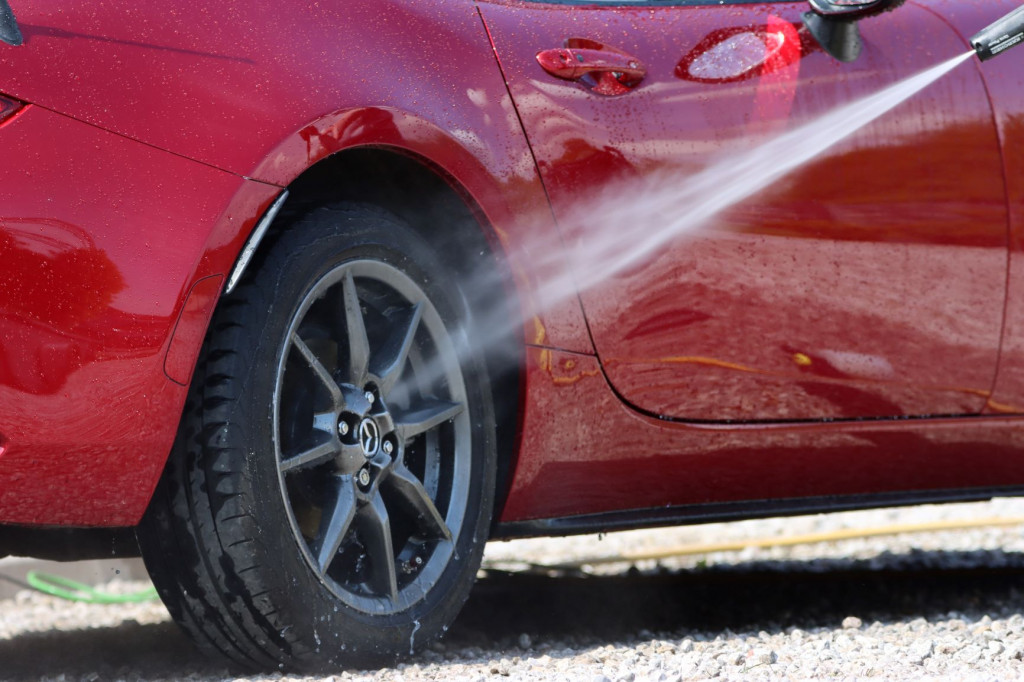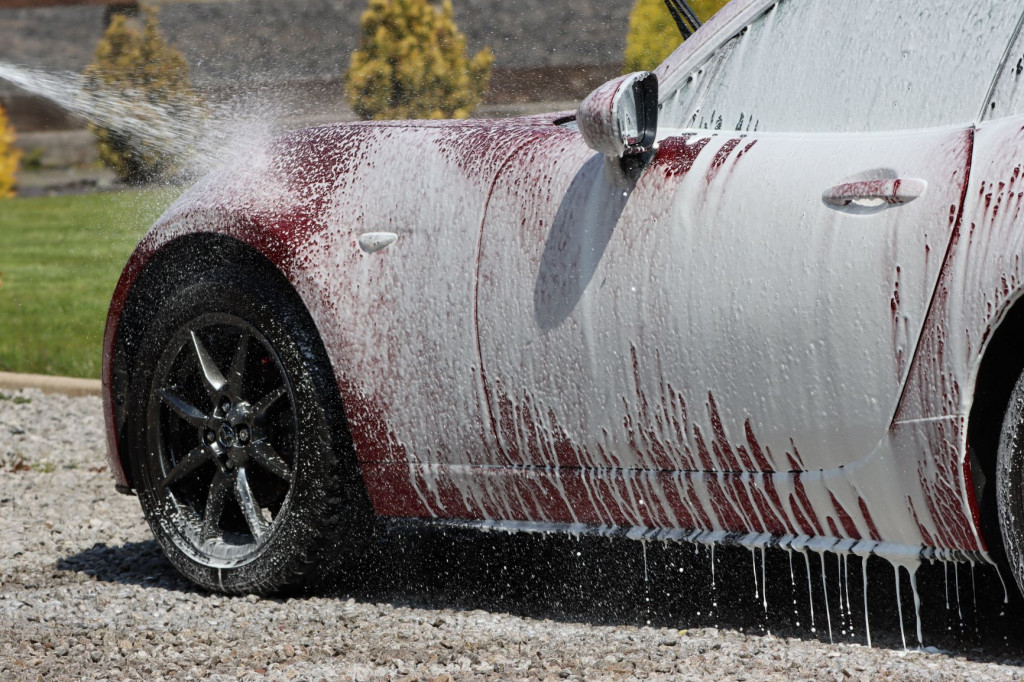There are two groups of people who are wondering if pressure washing a car will remove a wax and sealant. Those who are worried about removing the paint protection, and those who are looking for a good way to remove old waxes or coatings.
In this article, I’ll be talking about how you can properly use a pressure washer to clean your car, and what the effect is on your car. So let’s get started.
The Quick Answer
Using a pressure washer will not remove the wax or sealant on your car, unless used at a very high pressure. If the PSI of the pressure washer is below 1800, and you’re using a fan-type nozzle around a meter away from the car at a 45 degree angle then the wax, or coating will be fine.
Can Pressure Washers Remove Wax?
Pressure washers and jet washers, whatever you like to call them, will not remove waxes and sealants when used properly.
Pressure washers spray water at high pressure, hence the name, to help clean your car and remove dust and dirty before you go ahead and wash the paint using a mitt.
Waxes and sealants are not water soluble. That means that water doesn’t degrade the wax and cause it to break down. So the act of using water on the wax, won’t cause it to wash away.
So what if you want to remove the wax? Well, then you’ll need the use of another product. Some examples include paintwork cleansers and traffic film removers, which are designed to actually strip the wax.
Using a pressure washer is very unlikely to remove waxes or sealants.
The only time that the wax may be negatively affected, is if you use extremely high pressure. And this is highly likely to cause damage to the actual paintwork. So never dig out a jet washer with the intention of removing wax.
What Pressure is Safe to Use?
So what pressure is actually safe to use on your car’s paint, and how can you tell what pressure you’re using?
The term denoted to this is called PSI, and it stands for “pounds per square inch”. It simply is a unit of measurement used to describe the energy (and therefore pressure) at which water hits the surface you are cleaning.
Different pressure washers have different PSI values.
You should use a pressure washer that has between 1000-2000 PSI, this is enough to remove dirt without damaging the wax, or the paintwork.
You can check the PSI of your pressure washer online. Simply search the model and make.
If your pressure washer has a higher PSI, then use it on a lower setting to reduce the risk of damage, and use the correct nozzle type.
Use a Fan Nozzle Type
It’s also really important to use the correct nozzle type on your pressure washer. Using the wrong type can increase the risk of damage to your car, by increasing the PSI to a dangerous level.
Narrow nozzles concentrate the water to a smaller surface area, creating more pressure. This is great for cleaning, but bad for your car’s paint, and the coating e.g. sealant or wax.
Using a fan-type nozzle is the safest approach to take, because it applies the water to a larger surface area so the pressure is reduced.

Don’t Hold the Jet Wash Nozzle Too Close
It’s also really important not to hold the pressure washer nozzle too close to the paintwork. This is when you will start to negatively affect the wax, and potentially damage the clear coat on your car.
You should hold the nozzle at a 45 degree angle, and around a meter (3.5 feet) away from the car.
The angle allows the dirt and grit to be washed off the paint, and not pushed into it.
And the distance prevents the pressure from becoming too great, where it can damage the wax and the clear coat on your car.
Why Use a Pressure Washer?
Using a pressure washer is really great for washing your car, so don’t be scared of it!
When used properly, they won’t cause any harm to your car’s paintwork, or the protection sitting on top.
Using a pressure washer removes a lot more dirt than a standard garden hose, whilst also using less water.
Cleaning Power
There are two measurements for determining how effective these tools are at cleaning your car. The PSI, which we’ve already discussed, and the GPM.
The GPM, measures the gallons per minute, of water that pass through the device. The higher the GPM, the more water there is to remove dirt and wash it away.
You can calculate the cleaning power by multiplying the PSI and GMP.
Most garden hoses have a PSI of around 50, and a GPM of above 5. This means the cleaning power is around 250 units.
Whereas most pressure washers have a PSI of 1500 and a GPM of less than 1-2. Meaning you’ll get around 3000 units of cleaning power.
That’s around 12 times the cleaning power, whilst only using around a quarter the amount of water.
Reduces the Risk of Scratching
Using a jet washer helps remove as much dirt as possible before using a wash mitt, and hence reducing the risk of inflicting scratches during the wash process.
Pressure washers can also be used to apply snow foam, which is a really great way to remove even more dirt and making the wash process even safer.
I use a snow foam cannon attached to my pressure washer every single time I wash my car.
Check out this article I’ve written about snow foam cannons to learn more about the hype.

Check out this complete guide to washing your car without causing scratches.
Tips for Using a Pressure Washer
I thought it would be a good idea to round off this article with a few tips for using a pressure washer on your car, without causing damage to the wax or sealant, and the paintwork. So here we go.
- Use a long hose so you don’t have to keep lugging the pressure washer around the car with you.
- Use a fan-type nozzle, that sprays water at around a 25-40 degree angle.
- Hold the nozzle at a 45 degree angle to wash dirt off the surface and not push it into the paintwork.
- Never point the jet washer at the paintwork when you first turn it on. Always point it away from the car.
- Try and wash your car on concrete, not on gravel which can spray up onto the paintwork when using a pressure washer.
- Never use a pressure washer on the interior of your car.
Thanks for reading! I hope you’ve found this article helpful. Don’t forget to check out the rest of the website to learn more about washing and caring for your car.

